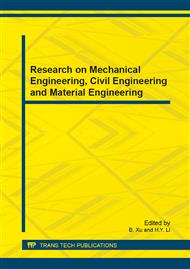p.238
p.242
p.246
p.250
p.257
p.263
p.268
p.272
p.276
Shape Memory Alloy Materials and Exercise-Induced Bone Injury
Abstract:
Shape memory materials are materials with special functions set of sensing and actuation in one. The shape memory alloy is one of the most important materials in shape memory materials. Shape memory alloy is a kind of alloy that alloy with initial shape in low temperature by the plastic deformation and fixed into another shape, by heating to a temperature above the critical, can be restored into the initial shape. The characteristic of shape memory alloy mainly has the shape memory effect and super elastic effect. Nickel titanium memory alloy is not used in the fracture of limbs, in recent years are also used in the spine and femoral head fracture. Nickel titanium memory alloy has good biocompatibility, and has the characteristics of super elasticity, low magnetic, wear resistance, fatigue resistance, corrosion resistance, as a novel material for internal fixation in the treatment of sports injuries are widely used.
Info:
Periodical:
Pages:
257-262
Citation:
Online since:
October 2013
Authors:
Price:
Сopyright:
© 2014 Trans Tech Publications Ltd. All Rights Reserved
Share:
Citation:


